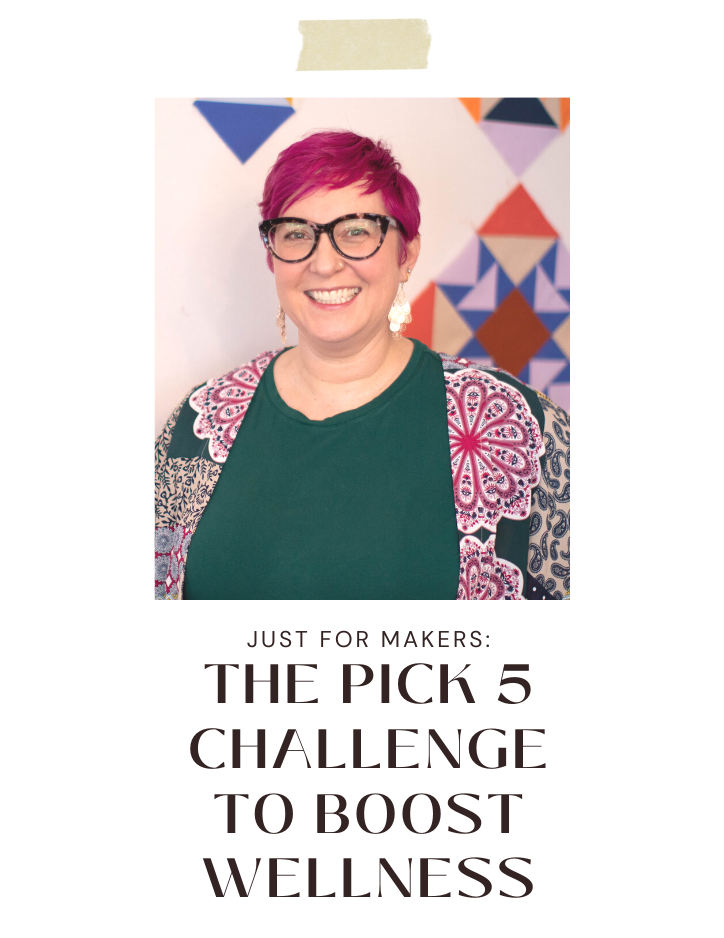We all struggle with perfectionism sometimes, and it steals from our joy. Today I’m sharing a story about my most complex quilting project to date… and the valuable lesson it taught me about letting go of perfectionism.
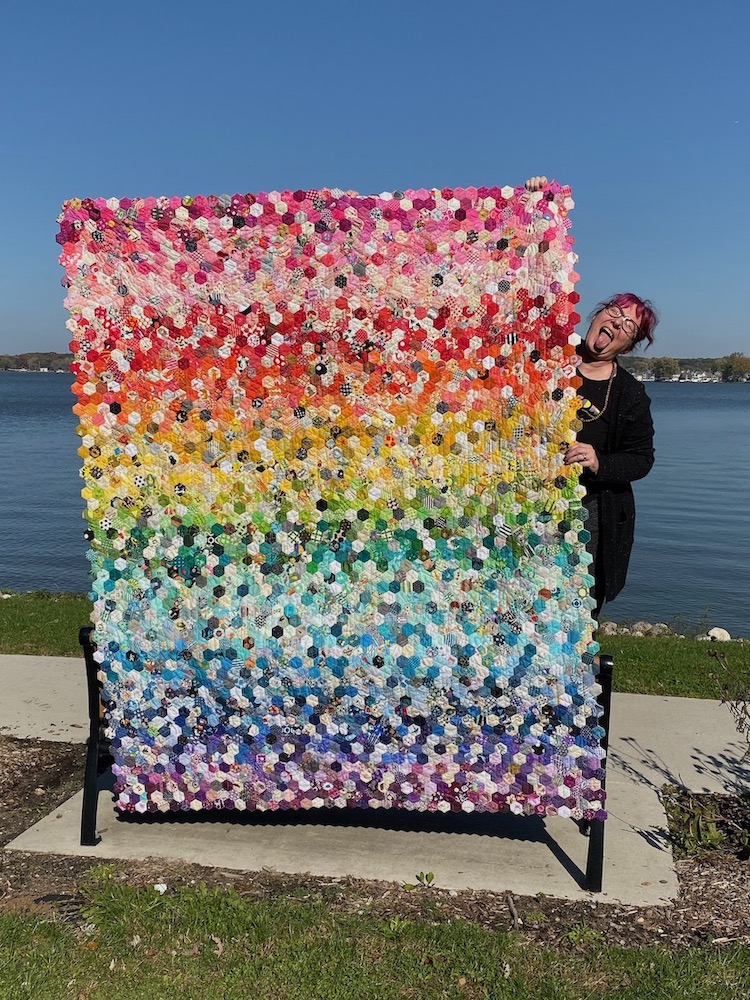
I finished my epic hexie quilt at a Chicago Modern Quilt Guild retreat, surrounded by friends. It was a gorgeous day so we went to a nearby lake for photographs
From a mindless activity to a planned project
My epic hexie quilt is my favorite project so far on my quilting journey. It started as a way to keep my hands busy while watching TV; I would take these little 1-inch hexagon papers and baste fabric to them, accumulating stacks and stacks of cuties.
After a year or so, I decided I needed a plan. My pal Robbi helped me create a digital document that would allow me to size a quilt up or down – and know exactly how many hexies I needed. I continued to baste hexies all the time, grabbing scraps from friends and “fussy cutting” to get the precise image I wanted in each hexagon.
Then I sorted all my hexies by color and did some complicated math to figure out how many rows of each color I could make with my hexies. I colored in my document from Robbi and started stitching them together.
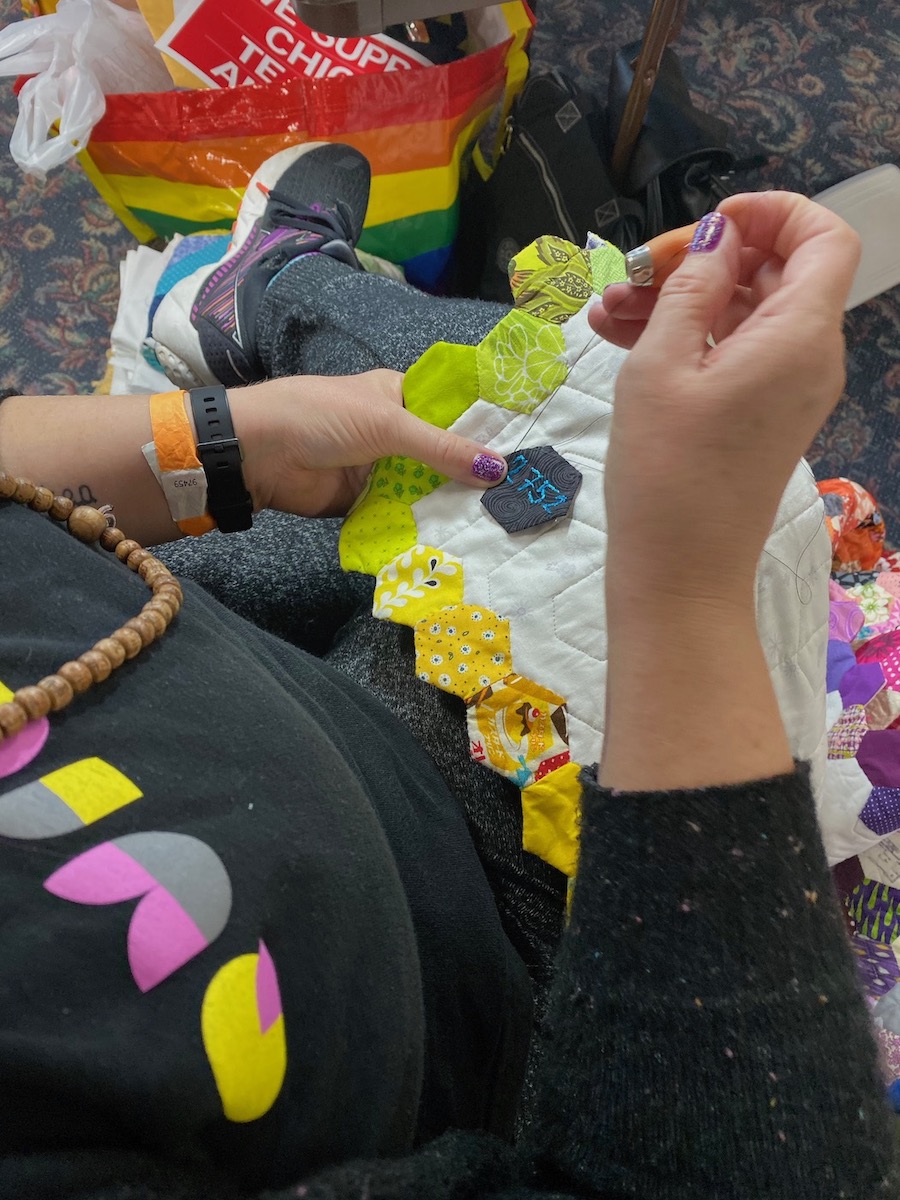
To finish the quilt, I embroidered one last hexie with the total number of hexies in the project: 2,752
I got VERY invested in the success of my hexie quilt
My hexies traveled with me to foreign countries, and to friends’ houses. I stitched at business conferences and lakeside picnics. I barely know how to estimate how many hours I put into making the quilt – I probably put 100 hours into basting hexies, easily, and I’m sure I put many hundreds of hours stitching them all together. Could it be 1,000 hours? Perhaps – I stretched the whole project out over almost five years.
So I was invested. This was going to be a “perfect” quilt. Despite how many times I had advised friends about letting go of perfectionism, I held on to it with an iron fist.
My technique was strong: I hand pieced the entire project and I planned how to get it quilted (my pal Amy did a great job). I researched how to do a hand-sewn facing instead of a standard binding so I could maintain the fun shapes along the edges. On October 27, 2019, in the company of many friends, I finished it.
I felt triumphant! And so many pals had helped and watched me work – we all ran outside to the lakefront to take photos of it.
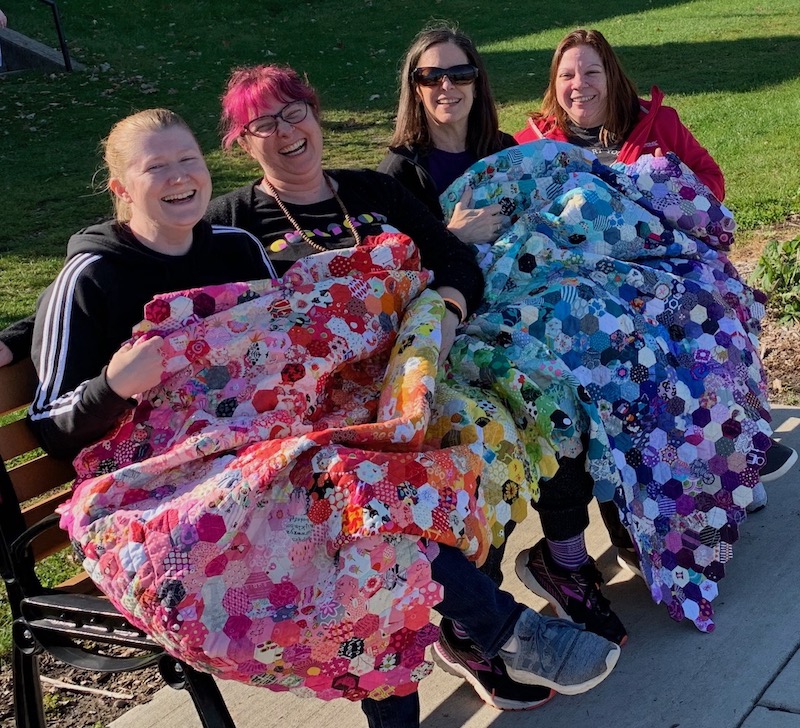
Friends Katie Cooper, Sarah Shulman and Jen Beatty were among the folks who helped me celebrate the completion of the epic hexie quilt
Then came my lesson in letting go of perfectionism
Then I took it home and washed it. And cried.
Some of the dye from the darkest fabrics had bled onto the light backing. The backing that was supposed to be starkly colorless to contrast the front. My “perfect” backing.
A few friends offered suggestions to help remove the dye, and their advice helped a lot – I was able to remove most of the dye, but not all of it. About 10 faintly colored ghosts of hexagons remain on the backing, in turquoise, yellow, and hot pink.
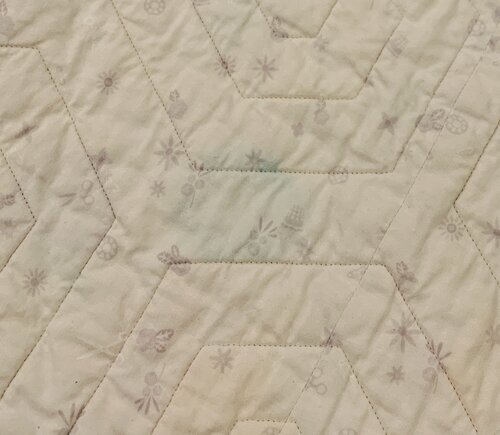
These are the kinds of marks that stayed on the back... like little ghosts of the hexie shapes on the front bled through. There are about 10 of these marks. I've learned to love them!
At first I was so sad. I had worked all this time to make this “perfect” quilt! But after a couple days, I started to feel better. It was still my quilt, even with imperfections. It was still a creation I worked on tirelessly for five years, one that connected me with many friends.
My best friend Natalie’s kiddos stayed at my house soon after, and her 7-year-old begged to sleep under it. He didn’t care about the flaws. He thought it was awesome. And every time he’s spent the night since, he’s requested that quilt.
Step-by-step process for letting go of perfectionism
Here are some of the steps I went through to embrace my quilt’s (and my) imperfections:
Accept that the act of letting go of perfectionism was necessary (acceptance is often the first step of making big change!)
Consider all of the positive traits of the creative project (the craftsmanship, the love I put into it, the memories associated with it, the exuberant color and fussy cutting, etc.)
Remembering that handmade items can never be perfect, and that’s a big part of why I love making things by hand – the mistakes show the humanity
Think about how a child or a favorite friend would admire the quilt (and accept that they would NOT point out its imperfections)
Remind myself that it’s possible to be kind to myself about mistakes, even if others haven’t been in the past (we sometimes have negative voices in our heads, and we need to show them the door)
Practice loving the project by using it, sharing it with loved ones, and showing it to people without pointing out its “flaws”

I’ve learned to love my epic hexie quilt, and no longer think of it as a “fail”
Learning to love imperfections
Within just a few days, I was back to loving my epic hexie quilt. The process of making that quilt was incredible, one that required planning and patience and collaboration. The practice of quilting was one I worked on daily, which meant my skill level and confidence grew and grew. I created a lifestyle that accommodated me quilting at all times – even business conferences, where fellow attendees were fascinated and asked if they could try sewing a few stitches.
Here’s what I dodged in letting go of perfectionism:
If I had only focused on the finished product, this quilt would truly have been a failure
I would have been miserable that I couldn’t enter it into a quilt show or win an award
I would have felt self-conscious about showing it to anyone
I would have felt resentment instead of joy every time I looked at the quilt
But the process, practice, and lifestyle I engineered meant that the quilt has been my constant friend for five years – and I accept her, even with her flaws.
How can you learn to reframe “failure” as success?
What project have you considered a failure? When have you worked hard on something, only to have some part of it turn out unsuccessful? How could you reframe that “failure” as a success? Hop into the comments and fill me in. Let’s celebrate your imperfections!
